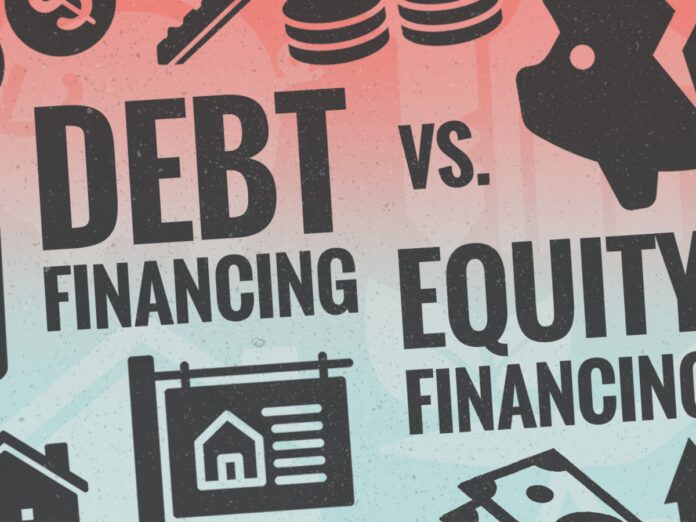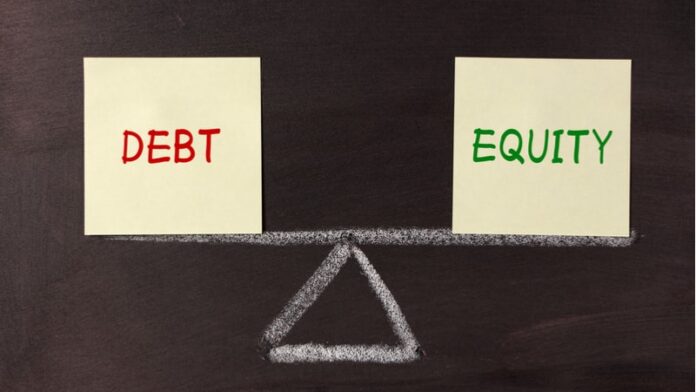Did you know that in 2024, consumer debt in the United States reached a staggering $15.6 trillion? That’s $1 trillion more than the previous year’s total! Experts even forecast those figures to rise further by the end of 2024.
Rising inflation rates, in turn, are primarily to blame for those increases.
However, taking on new debt can also indicate confidence in one’s financial situation. For example, some borrowers secure new debt because they have enough property equity.
But what exactly is debt? What about equity? How do the two differ from each other?
This debt vs. equity guide answers those questions by comparing the two, so read on.
Debt vs. Equity: The Chief Difference
Debt is something (often money) you owe, while equity is something you already own.
For example, when you take on financial debt, you borrow money from someone else, such as a lender. If that debt involves property, you build equity as you repay your debt obligations.
If you have a debt, you have the legal obligation to repay it. By contrast, you can use your equity in a property as collateral for new debt.
What Is Debt? A More Detailed Explanation

Every time you borrow money from someone or use credit issued by a lender, you take on debt. There are two primary debt classifications: secured and unsecured.
Secured debts are loans backed by collateral. Collateral is any property of value pledged as security for debt repayment. If a borrower defaults on a secured loan, a lender can use the collateral as compensation.
Unsecured debts are the exact opposite; they don’t require collateral.
Examples of Secured Debts
Carried by over 60% of Americans, a home mortgage or a house loan is one type of secured consumer debt. It involves borrowing money to finance the purchase of a home. The property itself serves as the collateral or security for the loan.
Auto loans are also secured debts used to finance the purchase of motor vehicles. As of the first quarter of 2024, Americans collectively held 80.2 million car loans. In this case, the vehicle is the collateral.
Commercial real estate property loans are other examples of secured debts. Businesses use these to finance the purchase of commercial real estate properties. Like home mortgages, the financed real estate properties secure the loans.
Commercial borrowers may also take out secured equipment loans. In this case, the equipment, such as a piece of heavy machinery, serves as the collateral.
Non-repayment of secured debts can result in the lender seizing the pledged collateral. Lenders may then sell these properties to recoup their losses.
For example, lenders foreclose the homes of borrowers who default on their mortgages. Likewise, they pursue companies that default on senior debt, such as real estate loans.
Examples of Unsecured Debts
Since unsecured debts don’t require collateral, their lenders take on a higher risk. As a result, most institutions offering unsecured loans prefer borrowers with good credit. They also prioritize creditworthiness, like debt payment history and debt-to-income ratio.
Personal loans, student loans, and credit cards are some examples of unsecured debts. For businesses, these include unsecured startup loans and business lines of credit.
What Is Equity? A Closer Look

Equity is the value of an owner’s interest in an asset with a lien. It’s the difference between the asset’s value and the outstanding lien.
Suppose you want to determine how much equity you’ve built in your mortgaged home. In this case, subtract the amount you still owe your lender from your home’s current market value. The answer reflects your equity in numerical figures.
For example, let’s say you owe your mortgage lender $150,000, but your home’s current market value is $450,000. In this case, subtract $150,000 from $450,000. The answer, which is $300,000, is the equity you have in your home.
To know your equity in percentage, divide your equity (in dollars) by your home’s market value.
If you use the same example above, divide $300,000 by $450,000, in which the rounded-off answer is 0.6667. You then multiply that by 100 to get the percentage. So, in this scenario, you have a home equity percentage of 66.67%.
How Can You Use Your Equity?
One of the ways debt benefits borrowers is by letting them finance large purchases. It also allows them to build and improve their credit, giving them a chance to secure future loans. Then, as borrowers repay their existing debt, they can use the equity they gain to secure new debt.
Let’s use the same $300,000 home equity example above.
If you need funds to improve the same home or purchase another one, you can borrow money against that equity. You can also use the funds for other legal purposes, such as travel expenses or medical bills. Either way, using the equity you have in your home for new debt usually involves taking out a home equity loan.
You can also apply for a home equity line of credit (HELOC), which works like a secured credit card. It’s a type of revolving debt that uses your home equity as the security or collateral.
Equity loans and lines of credit are also available to commercial real estate owners.
Another way to use your equity is to borrow against it to consolidate other debts. For instance, suppose you have a personal loan, an auto loan, and medical debts. Let’s also say the interest rate for the first is 12%, the second is 9%, and the third is 8%.
If you qualify for a home equity loan with a much lower rate, say 6%, consider taking one out. You can then use the funds to pay off all your other higher-rate loans and save on interest payments.

Secure New Debt Using Your Equity
As you’ve learned in this debt vs. equity guide, debt is something you owe, while equity is something you own. And since the latter is technically already yours, you can use it to secure new debt, such as a loan or credit.
So if you need to finance a purchase or pay for the costs of goods and services, you can take out a loan using your equity.
To read more informative guides like this, browse more of our blog!




